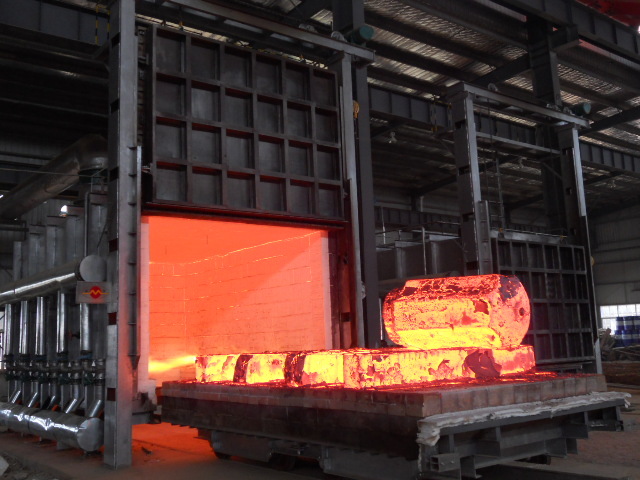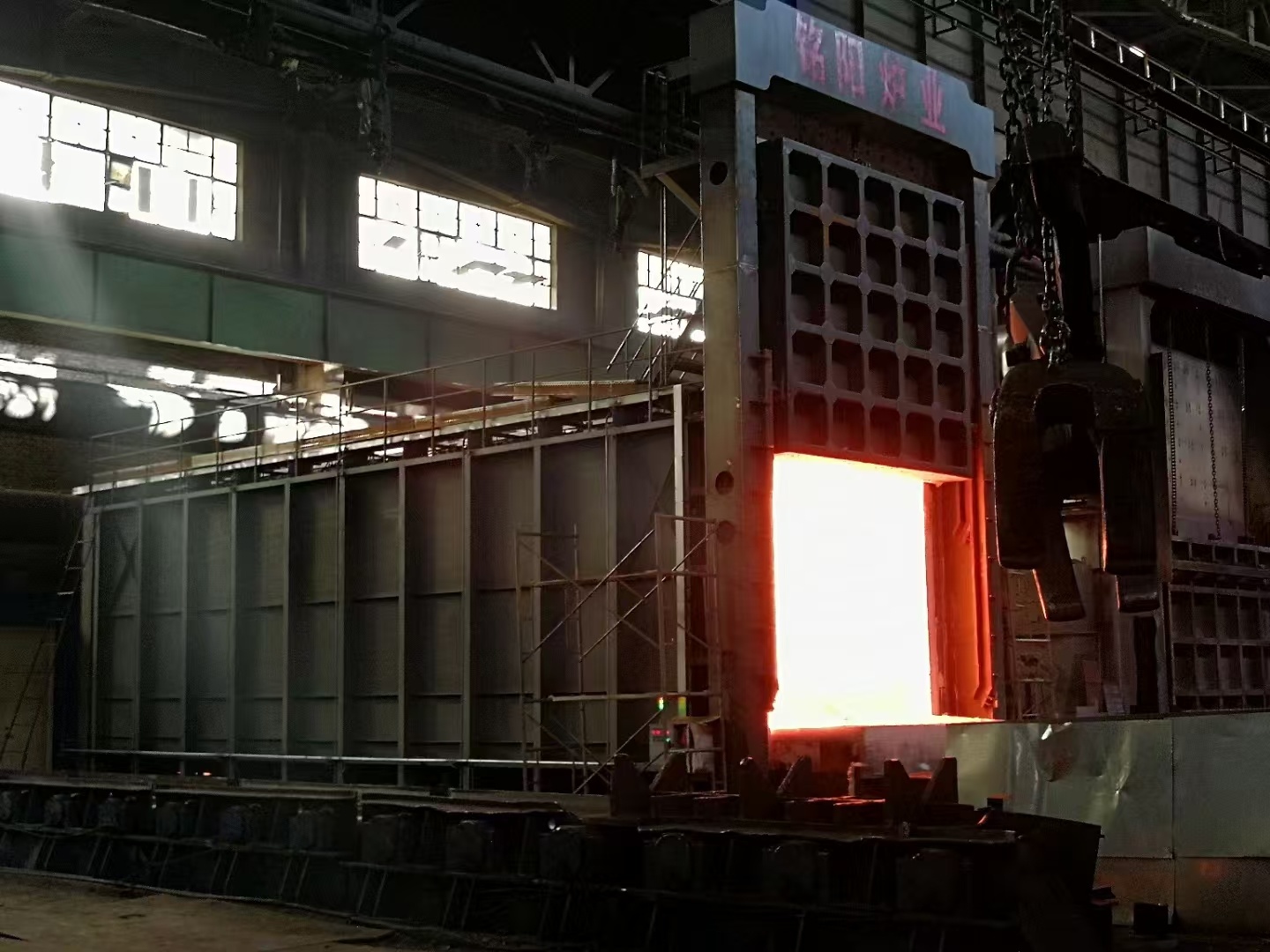


Why Your Shipbuilding Process Needs a Quality Heat Treatment Furnace
Why Your Shipbuilding Process Needs a Quality Heat Treatment Furnace
Introduction to Heat Treatment in Shipbuilding
The shipbuilding industry, at its core, relies heavily on precision and quality to ensure the safety and longevity of vessels. A critical aspect of this process is **heat treatment**, which significantly influences the mechanical properties of metals used in ship construction. **Heat
Why Your Shipbuilding Process Needs a Quality Heat Treatment Furnace
Introduction to Heat Treatment in Shipbuilding
The shipbuilding industry, at its core, relies heavily on precision and quality to ensure the safety and longevity of vessels. A critical aspect of this process is **heat treatment**, which significantly influences the mechanical properties of metals used in ship construction. **Heat treatment furnaces** play a pivotal role in achieving the desired characteristics of metals, making them indispensable in modern shipbuilding.
The Importance of Quality Heat Treatment Furnaces
Quality heat treatment furnaces are not merely tools; they are crucial investments that affect the entire shipbuilding process. Understanding the significance of these furnaces can lead to enhanced productivity, reduced costs, and improved product quality. Here are several reasons why a quality heat treatment furnace is vital for your shipbuilding operations:
Enhancing Material Properties
Metals undergo various changes in their microstructure when subjected to heat treatment. Processes such as **annealing**, **quenching**, and **tempering** can enhance the **tensile strength**, **ductility**, and **hardness** of materials. A high-quality heat treatment furnace ensures uniform heating, minimizing defects and ensuring consistency in the final product.
Reducing Production Costs
Investing in a quality heat treatment furnace can lead to significant cost savings over time. By optimizing the heating process and reducing waste, a quality furnace can help minimize energy costs. Moreover, improved material properties can decrease the likelihood of rework or scrap, further cutting costs.
Improving Safety and Compliance
In shipbuilding, safety is paramount. Quality heat treatment furnaces can help ensure compliance with industry standards and regulations. Properly treated materials are less likely to fail under stress, reducing the risk of accidents and enhancing the safety of the vessels produced.
Types of Heat Treatment Furnaces Used in Shipbuilding
Understanding the types of heat treatment furnaces available is crucial for selecting the right one for your shipbuilding needs.
1. Batch Furnaces
Batch furnaces are ideal for smaller production runs. They allow for heat treatment of multiple parts at once, making them suitable for varied shipbuilding needs. Their versatility makes them an excellent choice for companies that require flexibility in their production processes.
2. Continuous Furnaces
For larger shipbuilding operations, **continuous furnaces** are often more efficient. They allow for a constant flow of materials through the heating process, significantly increasing production speed. This type of furnace is essential for companies focused on high-volume outputs.
3. Vacuum Furnaces
Vacuum furnaces are used for processes that require a controlled environment. They are particularly beneficial for heat treating high-performance alloys and are ideal for components that must meet stringent quality standards.
Key Features of a Quality Heat Treatment Furnace
When selecting a heat treatment furnace, several features should be considered to ensure optimal performance.
1. Temperature Control
Accurate temperature control is essential for effective heat treatment. A quality furnace should have advanced control systems that allow for precise temperature monitoring and adjustment throughout the heating process.
2. Energy Efficiency
Modern heat treatment furnaces are designed with energy efficiency in mind. Look for furnaces that utilize advanced insulation and heating technologies to minimize energy consumption while maximizing output.
3. Durability and Reliability
A quality furnace should be constructed from durable materials that can withstand the rigors of continuous operation. Reliability is crucial in maintaining production schedules and ensuring consistent quality.
Heat Treatment Processes in Shipbuilding
The effectiveness of heat treatment relies on understanding the various processes involved. Each process serves a unique purpose in enhancing material properties.
1. Annealing
Annealing is used to relieve internal stresses in metals and improve ductility. This process involves heating the metal to a specific temperature and then allowing it to cool slowly, promoting a more uniform microstructure.
2. Quenching
Quenching involves rapid cooling of heated metals, often in water or oil. This process increases hardness, making it essential for components that require enhanced strength and durability.
3. Tempering
Tempering is a follow-up process to quenching that reduces brittleness. By reheating the metal to a lower temperature and then cooling it again, tempering optimizes the balance between hardness and ductility.
The Role of Automation in Heat Treatment
Modern heat treatment furnaces increasingly incorporate automation to enhance efficiency and precision.
1. Automated Monitoring Systems
Automated monitoring systems allow for real-time data collection and analysis, enabling operators to track performance metrics and make adjustments as necessary. This enhances the overall efficiency of the heat treatment process.
2. Integration with Other Manufacturing Processes
Advanced heat treatment furnaces can be integrated with other manufacturing systems, creating a seamless workflow that reduces downtime and enhances productivity.
Choosing the Right Heat Treatment Furnace for Your Shipbuilding Needs
Selecting the proper heat treatment furnace is crucial for optimizing your shipbuilding processes. Consider the following factors:
1. Production Volume
Assess your production volume requirements. For large-scale operations, continuous furnaces may be more appropriate, while smaller operations might benefit from batch furnaces.
2. Material Types
Different materials may require specific heat treatment processes. Ensure that the furnace you choose can accommodate the materials used in your shipbuilding projects.
3. Budget Constraints
While quality is paramount, it’s essential to consider your budget. Investing in a high-quality furnace is vital, but explore options that offer the best return on investment.
Future Trends in Heat Treatment Technology
As the shipbuilding industry evolves, so too does heat treatment technology.
1. Advanced Materials
The rise of advanced materials, such as composites and alloys, is driving the development of specialized heat treatment processes that can accommodate these innovations.
2. Sustainable Practices
Sustainability is becoming increasingly important in manufacturing. Future heat treatment furnaces are likely to incorporate eco-friendly practices, such as reduced energy consumption and emissions.
3. Smart Technology
The integration of smart technology in heat treatment furnaces will streamline operations, optimize processes, and improve overall efficiency, paving the way for a more intelligent manufacturing environment.
FAQs About Heat Treatment Furnaces in Shipbuilding
1. What is the primary purpose of heat treatment in shipbuilding?
Heat treatment enhances the mechanical properties of metals, improving strength, durability, and resistance to wear.
2. How does a heat treatment furnace work?
A heat treatment furnace heats metals to a specified temperature, holds them for a set duration, and then cools them, altering their microstructure to improve properties.
3. Can heat treatment processes be automated?
Yes, many modern heat treatment furnaces feature automation to monitor and control processes, enhancing efficiency and precision.
4. What types of materials benefit from heat treatment?
Most metals, including steel, aluminum, and various alloys, can benefit from heat treatment processes tailored to their specific properties.
5. How can I determine the right furnace for my needs?
Assess your production volume, material types, and budget constraints to select a furnace that aligns with your shipbuilding requirements.
Conclusion
In conclusion, investing in a quality heat treatment furnace is essential for optimizing your shipbuilding process. The benefits of enhanced material properties, reduced costs, and improved safety cannot be overstated. By selecting the right furnace and understanding the heat treatment processes involved, you can elevate the quality of your vessels and ensure compliance with industry standards. As technology continues to advance, staying informed about the latest developments in heat treatment will position your shipbuilding operations for success in an increasingly competitive market.


